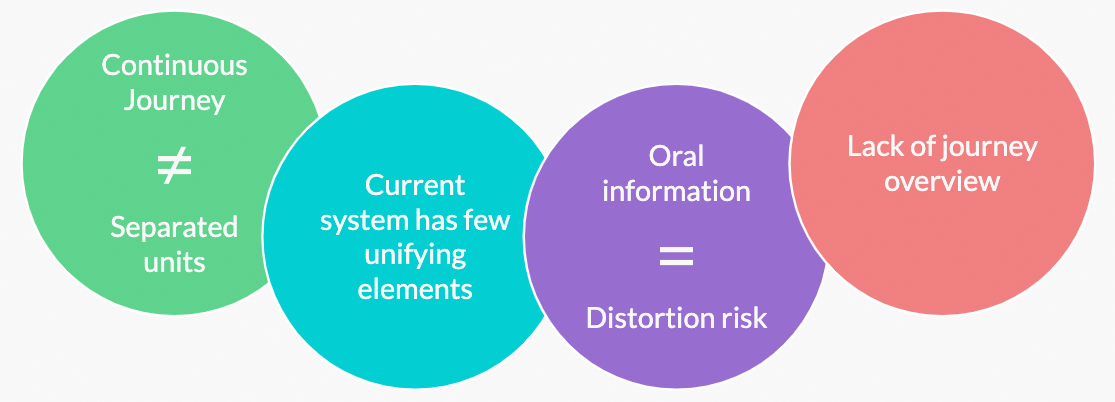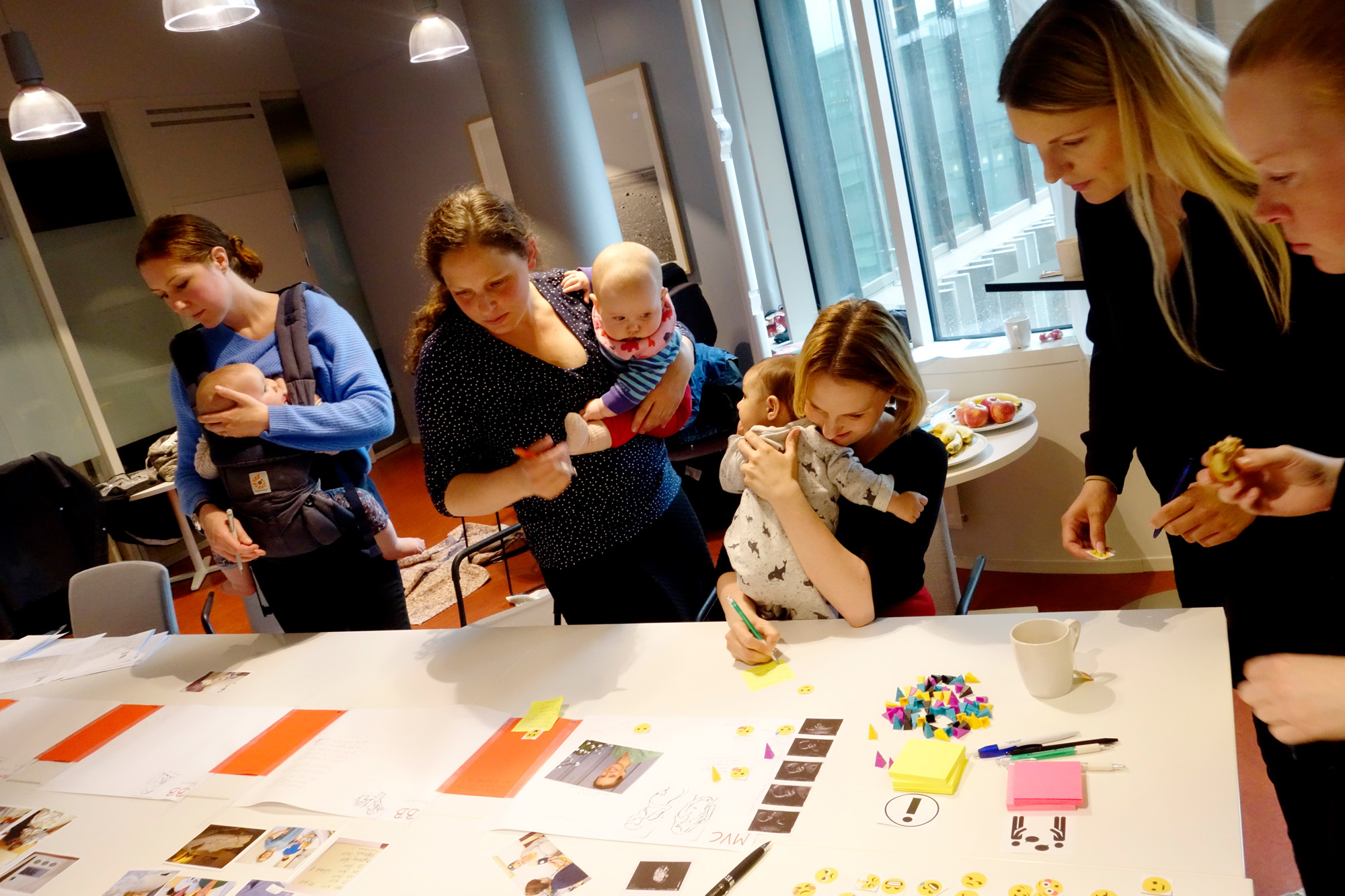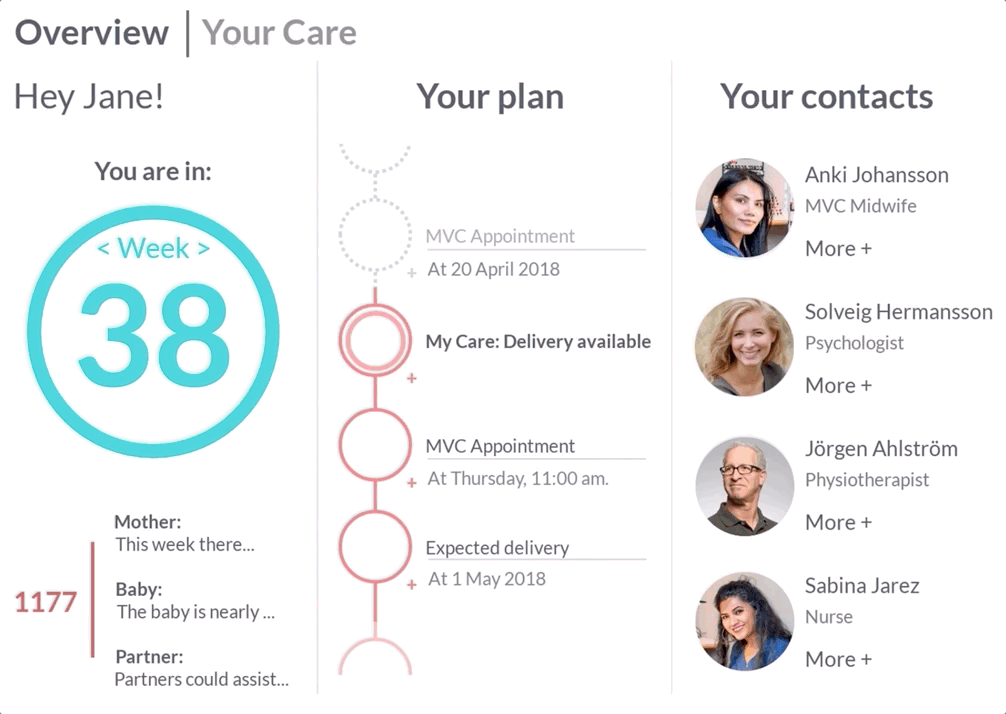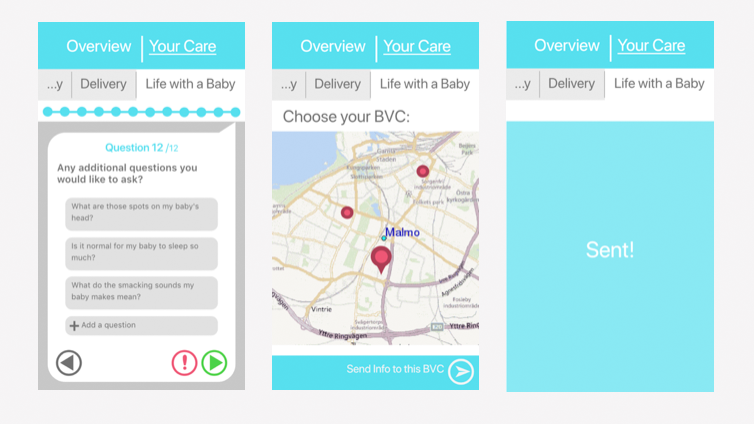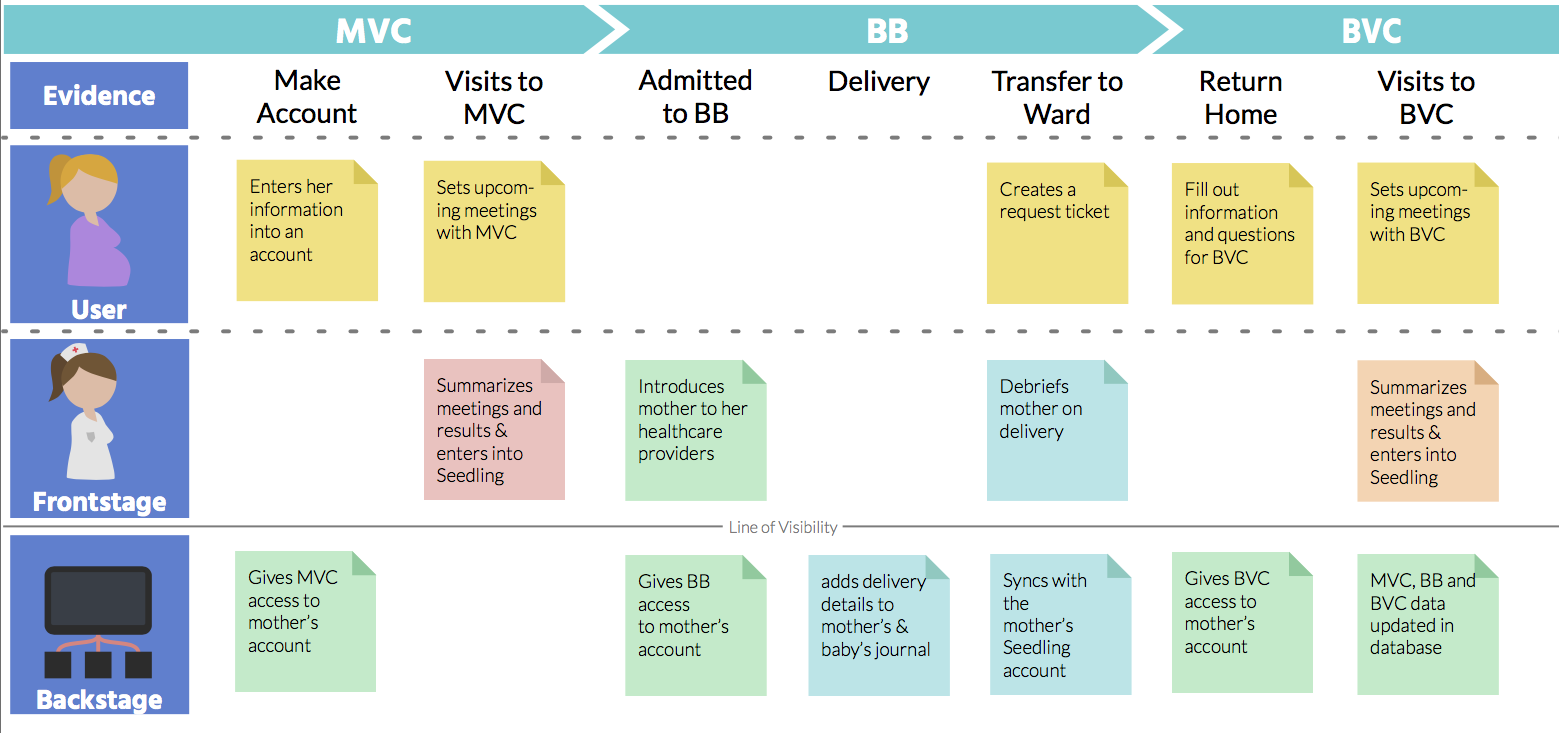Seedling
Course: Service design
Stakeholder: Region Skåne
Project length: 8 weeks
Group work: 5 students
My role: Research, Sketching & Prototyping, Organizer and co-leader of a Co-design workshop
Materials: Illustrator, Photoshop, Adobe XD, Marvel, Final Cut Pro, pens, papers and post-it notes
INTRODUCTION
During a course in service design we were given an assignment by Region Skåne. The task we were given was to investigate aspects surrounding the last period of the pregnancy to the return home after delivery. During this time, mothers have to meet many different healthcare professionals and for many of the mothers going to the hospital for delivery is their first encounter with the in-patient care. The aim of this project was to find a solution to make the transition from the Maternal Health Center (MVC), to the delivery room and maternity ward (BB), and then back home and being in contact with the Baby Health Center (BVC) to feel more unified and safe for parents.
In the project we did desktop research, reading up on reports, looking at existing digital solutions. We then interviewed first and second time mothers as well as helathcare providers: two midwives from a maternity ward and one midwife from a private BVC-facility. We also held a co-design workshop with a group of mothers. In the middle of the project we reported back to the project owner, Region Skåne, at a meeting where among others heads of the different antenatal care wards took part.
Seedling
From our research we created the prototype Seedling, a CRM-tool that unifies, informs and documents throughout this journey. Seedling can be used by both parents and healthcare providers.
- Seedling is a system that unifies the journey for mothers and enables midwives to give patients a more personalised care whilst saving time.
- Seedling ties the units closer to each other and can transfer both medical and non-medical information between steps.
- Seedling merges the general och personal information to give the mother an overview with the possibility of actively adding and checking what information that is in the system.
- Seedling provides a ticketing system to optimize the midwives work and give the mother a sense of control
Some of our insights

A summary of emotional charts filled in by mothers participating in our project going through pregnancy and child birth.
We found that the majority of the mothers had experienced postpartum complications which brought our attention to how the system handled non-ideal situations.
- Continuous Journey: The dissonance on whether the pregnancy care system is one large piece or a collection of smaller components forces mothers to meet many different groups of medical professionals throughout their journey and detracts from the mental image of a unified system.
- Few unifying elements: There are few unifying elements in the current structure. The mothers we met felt like a lot of the information they had given to staff at a certain stage of their journey did not follow them between care units. Transfers between units often meant that mothers continuesly became anonymous to the system having to re-enter their information.
- Oral information: A lot of the information given both from midwives and mother is oral. This is quick and simple for both parties, but it is also a source of misinterpretation as spoken words do not leave tangible evidence to use as reference. This chance of misinterpretation leads to a communication flow akin to the “whispering game”.
- Lack of overview: Mothers participating expressed the feeling of being an object in a system that they had no control over at BB. We found they lacked an understanding and overview of what was going to happen to them during their stay at the hospital, that added to their stress levels and frustrations.
DESIGN PROCESS
Desktop Research
Most of the desktop research came from the report Trygg Hela Vägen. Howeve, we also looked at existing systems that mothers used to help them during their time within the pregnancy care system.
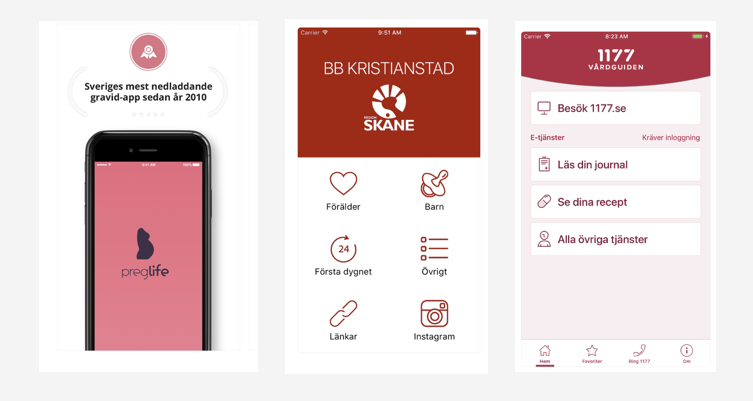
The most prominent tools used by the mothers participating were are the apps Preglife, BB Kristianstad and 1177 Vårdguiden.
Interviews
- In order to prevent our end design from being overly biased towards a particular type of user we interviewed four mothers with different circumstances surrounding their delivery individually. Three of the participants were first-time mothers, but one mother had teo children. In interviewing her we wanted to be able to see if a second time through the pregnancy care system could give us new insights.
- Three health care providers were interviewed individually: two midwives from a maternity ward and one midwife from a private BVC-facility.
Co-Design Workshop
After the interview results were collected and analyzed, we organized a co-design workshop with a group of mothers. Five mothers and their babies took part in the session which consisted of three activities.
- An open discussion about each mother’s experiences and view of the care system. The activity familiarized the mothers with our topic while opening up discussion as they uncovered similarities between their experiences. They identified both the positive aspects as well as situations where flaws usually appear.
- The participants were asked to make a timeline collage. Marked on the timeline were 5 stages: MVC, delivery, ward post-birth, first week at home and BVC. Between each stage transition spaces were marked. Embodying transitions in this way allowed participants to highlight what being passed around a care system meant for them.

- In the last activity we asked the mothers to envision what the experience of giving birth “on Mars” would be. The background provided was that humans would be forced to leave earth for Mars which led to a “society reset”. When at Mars, a new and perfect pregnancy care system would be introduced. The mothers were asked to describe the ideal care system they envisioned and how that system might function. Analyzing free-form ideas aimed to uncover the values and functions these suggestions actually carried. These underlying notions could then be embodied differently and incorporated into a functional solution prototype.

Addressing the Design Oppurtunities
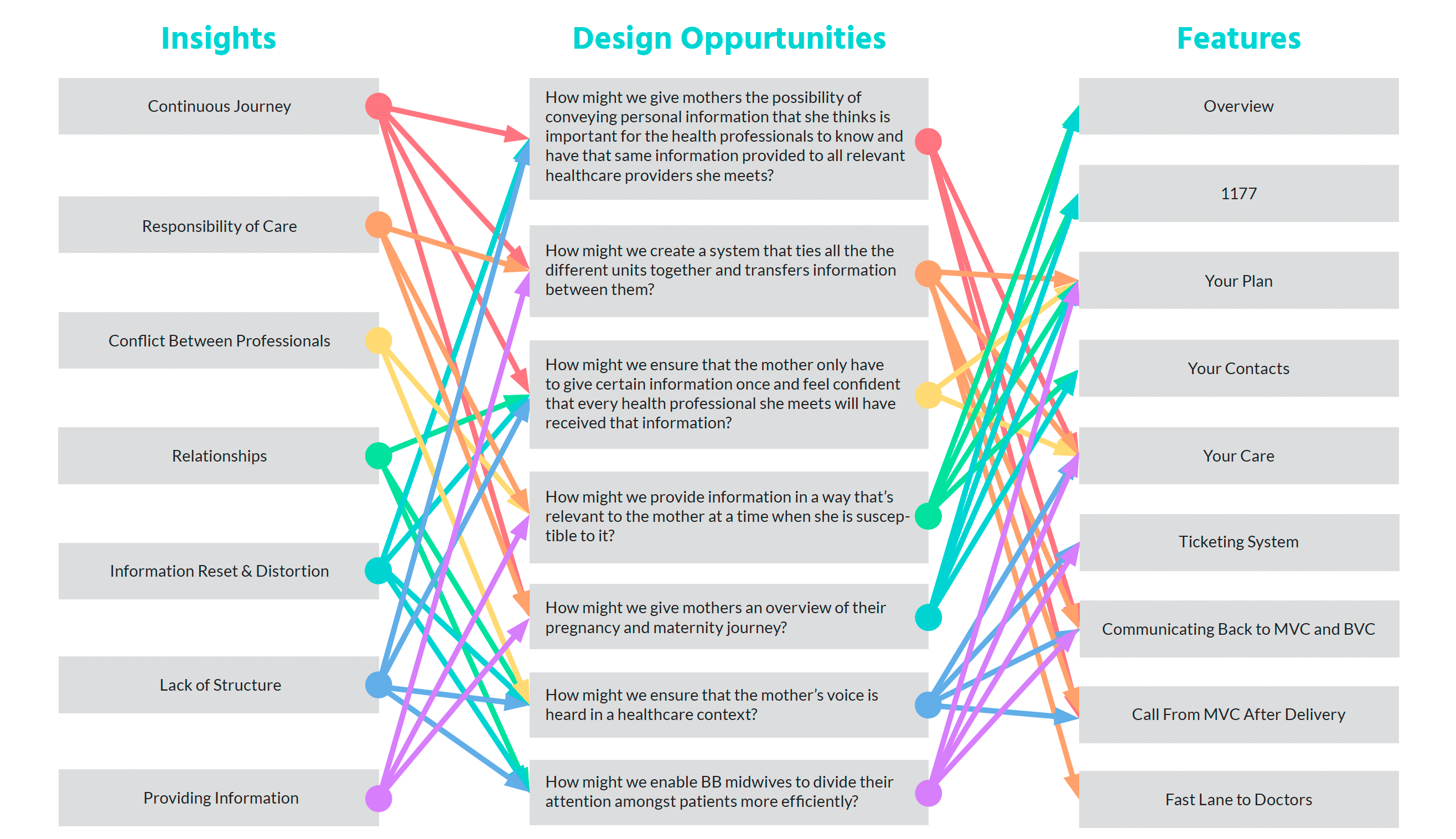
This graphic shows the relationship between the insights, design opportunities and features. The insights point to the design opportunities they contributed to, and the design opportunities point to the features that address them.
Design: Seedling
Service Blueprint
